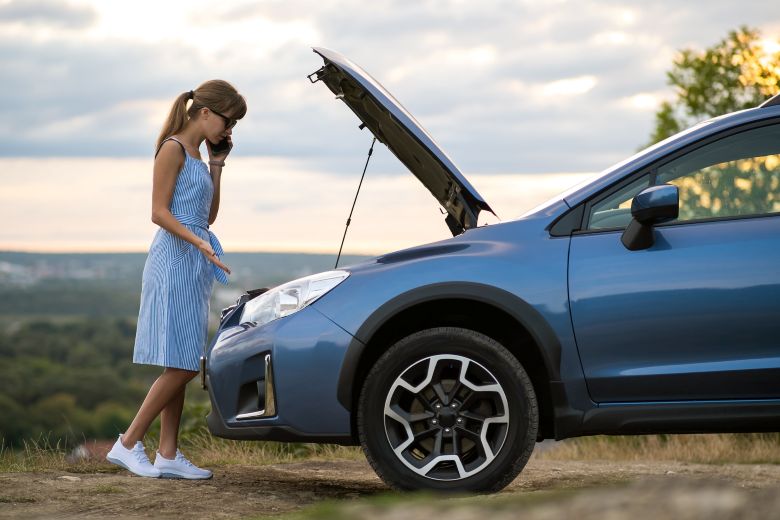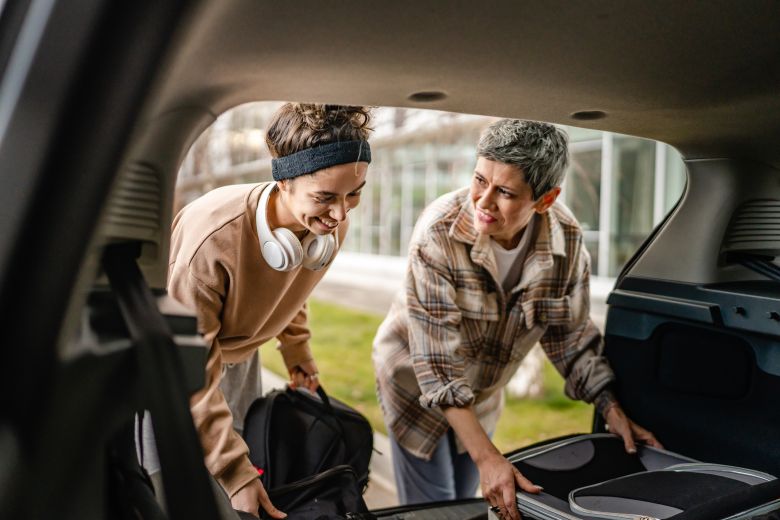
Back to School Car Care for New Drivers
- Vehicle Maintenance
- PEAK
- August 19, 2025
Make sure you're ready for heading back to school with these essential car care tips.
Every summer turns to fall, and that means back-to-school season is here.
If you're a newly licensed driver heading back to high school or college, there's more to your checklist than books and class schedules. You'll also need to make sure you've got a reliable, smooth-running car you can trust on the road ahead.
Whether you're a daily campus commuter or road tripping back to college, this checklist will help you avoid car troubles that can mess up your school year and student budget.
It covers:
- Fall car care essentials for students
- Optimizing visibility behind the wheel
- Parking and security tips for school campuses
- Car care considerations for college road trips
- Things every student should keep in their car

Fall car care essentials for students
Most students aren't driving brand-new cars. Instead, many rely on well-used hand-me-downs and other older vehicles. A long-term study by the Insurance Institute for Highway Safety (IIHS) also found that a lot of younger drivers have micro, mini, and compact models — mainly because parents don't typically want to spend big bucks on cars for their newly licensed kids.
While that makes sense, older cars need more attention to avoid breakdowns. Plus, smaller cars don’t protect you as well in accidents. These factors make it more urgent for students to take good care of the car they have — whatever it may be.
To that end, it's important to keep up with some basic maintenance before driving to school. This starts with:
- Fluid checks: Check coolant levels, engine oil, transmission fluid, brake fluid, and power steering fluid if your car uses it.
- Tire care: Do the penny test to make sure your tires have enough tread left on them, and check your tire pressure to boost your fuel efficiency and prevent a potentially dangerous blowout.
- Battery testing: The summer heat can be brutal on car batteries — especially older ones. Don't wait until yours fails to find out it's time for a replacement: lots of auto service centers will test your battery for free. You can also grab an inexpensive device called a multimeter to test it yourself.
If you want to save money and learn some skills, check out our DIY guide to spring car care. It works for fall too, and it'll come in handy as you're trying to make the most of your student budget.
You can also consult our complete fall car care checklist, which has additional tips and tasks suited to the season.

Optimizing visibility behind the wheel
Poor visibility leads to a lot of accidents each year. There are three important things you can do when the school year starts to make sure you don't end up as the next statistic:
Replace your wiper blades
Wiper blades wear out way faster than most people realize. You should change yours at least once or twice a year to boost visibility, and spring and fall are the perfect times to make the switch.
First, browse PEAK's lineup of premium wiper blades to find the best product for your vehicle and budget. Don't forget the rear blade, as drivers often do.
Next, find video installation instructions in our DIY Hub or use this guide to removing and replacing PEAK wiper blades to get your new wipers operational.
Stash an extra jug of windshield wash in your trunk
Dirty windshields can also mess with your visibility. Glare, smudges, and road grime can make it tough to see lane markings, signs, and even other cars or pedestrians. Keep things clean by topping off your washer fluid, and throw an extra jug in the trunk to make sure you never run out in a pinch.
PEAK's unique windshield wash formulations include effective and powerful products for year-round use. While you're at it, you can also brush up on windshield maintenance best practices that can cut your accident risk.
Check or upgrade your headlights
It starts to get darker earlier in the day in fall, so take a minute to make sure your headlights are aligned for maximum visibility and working properly. Here's how:
- After nightfall and with your car parked, turn on your headlights.
- Do a quick visual check to make sure everything that's supposed to light up actually does.
- Test your headlight alignment to make sure your beams properly illuminate the road. Adjust your headlights if necessary — ideally before the end of daylight saving time.
As this DIY guide explains, changing your headlight bulbs is something you can do yourself if you'd like to swap out your old bulbs for high-performance PEAK upgrades. PEAK headlights are specially engineered for all kinds of driving conditions, and they last and last.
Parking and security tips for school campuses
Campus parking lots can be big and dark, especially at schools with large commuter bases. A few smart habits can help keep you and your vehicle safe:
- Park in well-lit, high-traffic areas whenever possible.
- Always roll up your windows and lock your doors.
- Don’t leave valuables or things like backpacks in plain sight.
- Install a dash cam to record everything that happens inside your vehicle.
- If available, use campus parking apps to save some time.
It's also a good idea to get in the habit of checking to make sure your car isn't leaning to one side or the other after it's been parked for a while. This kind of "lateral tilt" can occur if you have a problem with your suspension or tires.

Car care considerations for student road trips
Whether you’re driving back to college out of state, or planning a fun spring break with friends, road trips are great — but breaking down isn't. Here's how to avoid the hassle (and expense) of trouble on the road.
- Round up your documents: Beyond must-haves like your driver's license, it's wise to bring extra copies of your insurance and vehicle registration — especially if you're heading out of state.
- Test vehicle essentials: Check tire treads, tire pressure, and air levels. Make sure all your lights and signals are working, test your battery, and top off all your fluids including engine oil, brake fluid, antifreeze coolant, and windshield wash.
- Put together your emergency kit: A complete, well-stocked emergency kit can literally save your life. This printable road trip checklist itemizes everything yours should include.
You can explore this topic in depth with our ultimate road trip guide, which includes important dos and don'ts to follow if you break down despite your best efforts.
Things every student should keep in their car
While it's a good idea to keep a fully stocked emergency kit in your car at all times, you can get away with a "lite" version if you're just commuting to campus. Include these essentials, which will help you get through most of the situations you could encounter along the way:
- Jumper cables or a portable battery jumper
- First aid kit
- Tire pressure gauge, tire plug kit, and portable air compressor
- Phone charger or power bank
- Reflective triangles and high-visibility vest
To wrap it up, remember that taking care of your car helps you steer clear of inconveniences, accidents, and costly repair bills. It may not be the first thing you think of when back-to-school rolls around, but it's essential to make sure you enjoy a safe and productive school year free of unwelcome roadside surprises.

